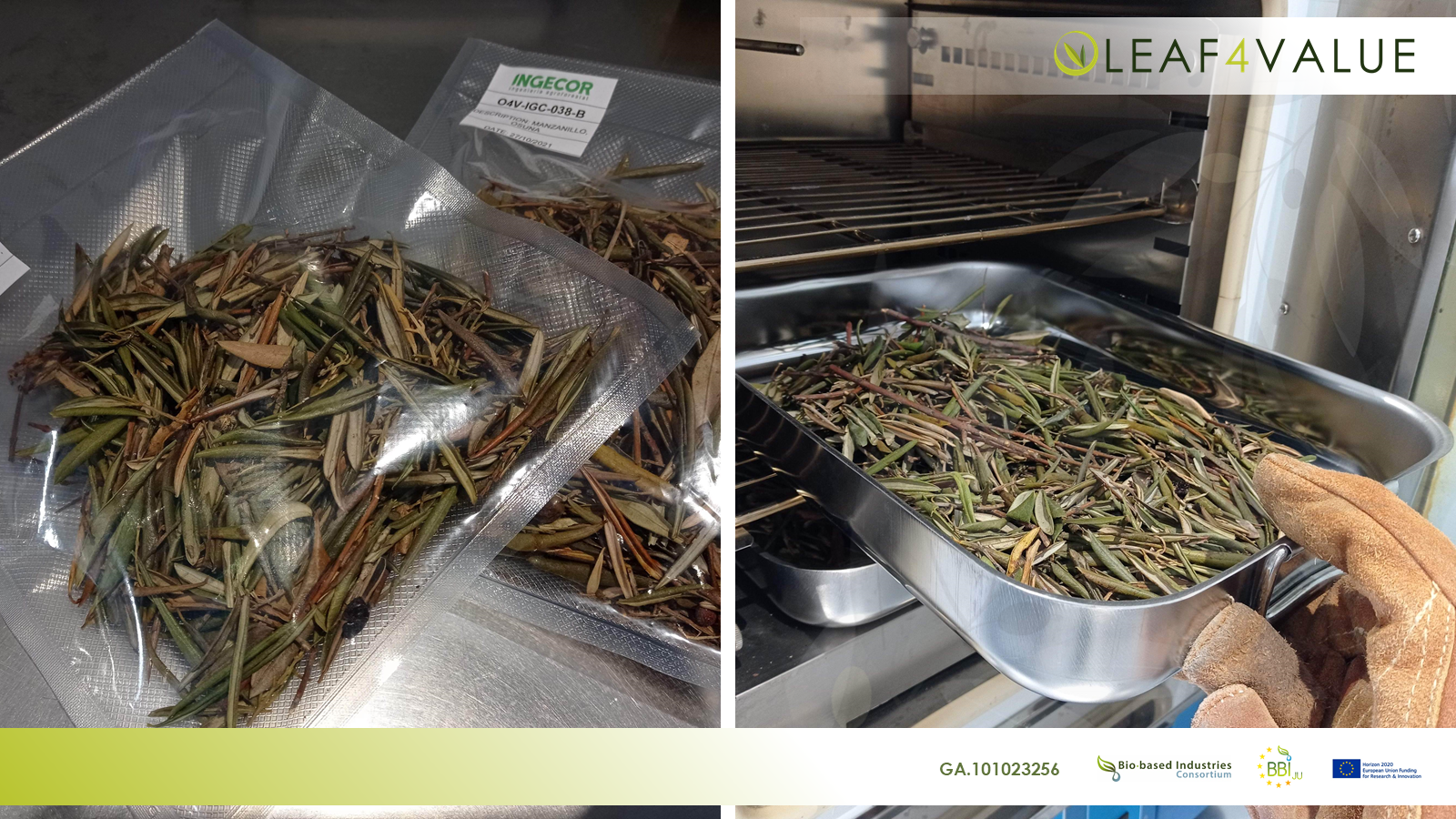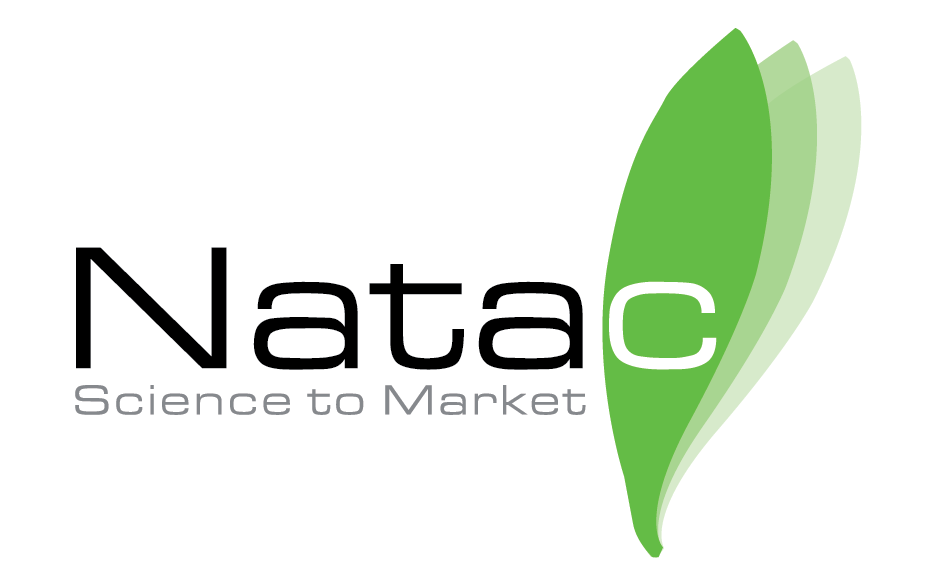Revolutionising the olive industry: OLEAF4VALUE Unveils Market-Ready, Bio-Based Products from Olive Leaf Valorisation
Olive leaves have been underutilized primarily due to limited awareness of their health benefits, overshadowed by the popularity of olives and olive oil in culinary traditions. There are many challenges in processing techniques, regulatory constraints, and limited research development and consumer awareness which also contribute to their infrautilization. In this article, we would like to dive deeper on the many reasons why revalorisation of olive leaves is crucial.
Have you ever wondered what happens to olive leaves after olive recollection and pruning? They remain in the fields and mills! They add up to a staggering amount of biomass – olive trees used to produce table olives need to be pruned every year, whilst olive trees grown for olive oil need to be pruned every second year. It is estimated that a whopping 1.25 million tons of olive leaf biomass is produced annually in Spain alone, representing approximately 50% of the world’s total production. Most of the biomass from the pruning has been traditionally left in the ground, fed to livestock, or burned, which means the underuse of a valuable resource and contributes to greenhouse gas emissions.
Indeed, the olive leaf biomass is rich in valuable bioactive compounds such as polyphenols, triterpenoids, essential oils, lipids, and lignocellulose, making it a potential asset in various industries including food, feed, chemical, nutraceutical, cosmetic, and pharmaceutical sectors. Collecting and finding the best valorisation route for a given batch of leaf biomass is very challenging and has been marginally tried before.
OLEAF4VALUE is a 3-year collaborative EU-funded project (funded under the BBI-JU, now known as CBE-JU) which began in June 2021 and ends in July 2024. It brings together a consortium of 16 experienced partners dedicated to fully exploiting the potential of this underutilised biomass. The project uses enzymatic biotransformation and nanoencapsulation technologies to create tailored products for specific end-user markets. The consortium includes entities from the entire value chain, encompassing the collection and supply of raw material, biorefining processes, post-extraction technologies, bioanalysis, market validation, and impact assessment, including sustainability.
The project’s primary goal is to provide a sustainable solution for the comprehensive valorisation of olive leaves, that is, finding the best final product for the given condition of the leaves: factors like origin, horticultural practices, tree type, and leaf origin (i.e. whether the leaves grew on older, low-hanging branches, or in new growth near the tree crown) can impact on what compounds can be extracted and in which quantities from the leaves. The project aims to establish six new value chains that will introduce 24 bio-based and cost-effective products to the market. These products aim to create value across the entire chain, with a particular emphasis on the primary sector.

Olive leaves samples by INGECOR, OLEAF4VALUE partners.
Notable compounds such as oleuropein, luteolin, and oleanolic acid found in olive leaf extracts are currently being utilised in the revalorisation process. Examples of resulting products include natural preservatives; treatments for certain health conditions such as diabetes; antioxidants for the food market; new feed additives to enhance animal health and reduce the use of antibiotics; and lastly, new building blocks and natural antioxidants for the chemical sector. Additionally, several bio-based compounds generated by the project show promising results as potential cosmetic ingredients, for example, offering protection against oxidative stress.
Biomass Assessment
To date, OLEAF4VALUE has successfully developed cutting-edge uses for sensors, for example, NIR spectroscopy, a technique that shows promising results in evaluating key components like oleuropein and other bioactive compounds in olive leaves. The project has also explored the impact of different treatments on the leaves prior to valorisation, like drying or fermentation, on the final chemical composition.
Smart Biorefinery Design
Furthermore, the OLEAF4VALUE project is currently putting the finishing touches to an innovative smart biorefinery design which will be capable of producing over 40 different bioproducts from olive leaves.
Biochemical Innovations
Using enzymes and microbial strains, the OLEAF4VALUE project has been able to obtain over 20 molecules from oleanolic acid and oleuropein, some of which are entirely new.
Product Testing & Market Launch
The OLEAF4VALUE project’s extracts are proving to be effective antioxidants and antimicrobial agents. This could have benefits for gut health and the immune system, though these effects are still undergoing testing. Oleanolic Acid has pharmacological activity, participating in processes such as hepatoprotection, anti-inflammation, antioxidation, anti-diabetic, anti-tumoral, and anti-microbial activities. However, their therapeutic applications are limited by their poor water solubility, permeability, and bioavailability. Within the OLEAF4VALUE project, research partners have found that different formulations, like microemulsions and solid dispersions, have improved the bioavailability of the compounds making them easier to administer and to absorb effectively.
Moreover, one element in ensuring financial viability is the energy input required for extraction of the compounds – it also has a key role in the environmental impact of the project’s polyphenols and lignocellulose-derived products. The OLEAF4VALUE project is committed to proving sustainability and minimizing the environmental impact of the products over their entire lifecycle.
If you are eager to learn more, visit the OLEAF4VALUE project’s website and social media channels.

This project has received funding from the Bio Based Industries Joint Undertaking under the European Union’s Horizon 2020 research and innovation programme under grant agreement nº 101023256.






